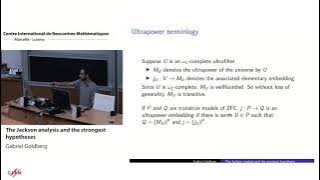Nonstandard analysis | Order theory | Families of sets
Ultrafilter
In the mathematical field of order theory, an ultrafilter on a given partially ordered set (or "poset") is a certain subset of namely a maximal filter on that is, a proper filter on that cannot be enlarged to a bigger proper filter on If is an arbitrary set, its power set ordered by set inclusion, is always a Boolean algebra and hence a poset, and ultrafilters on are usually called ultrafilter on the set . An ultrafilter on a set may be considered as a finitely additive measure on . In this view, every subset of is either considered "almost everything" (has measure 1) or "almost nothing" (has measure 0), depending on whether it belongs to the given ultrafilter or not. Ultrafilters have many applications in set theory, model theory, topology and combinatorics. (Wikipedia).



















